
|
||||||||||||
|
|
|
Stan Lee Super Hero- Excelsior! Dec 28, 1922 - Nov 12, 2018
WITH GREAT POWER THERE MUST ALSO COME - - GREAT RESPONSIBILITY!
Amazing Fantasy #15 (August 1962) - The first Spider-Man story
"With great power comes great responsibility."
-Stan Lee
You belong, you belong, Be an early riser. Face front... ’NUFF SAID! You belong, you belong, You Belong.
Face front, true believer!
Stan Lee is an American writer,
editor, creator of comic book superheroes, and the former president and chairman
of Marvel Comics. With several artist co-creators,
most notably Jack Kirby and Steve Ditko, he co-created Spider-Man, the Fantastic
Four, the X-Men, Iron Man, the Hulk, Daredevil, the Silver Surfer, Dr. Strange ,
and many other characters, introducing complex, naturalistic characters and a
thoroughly shared universe into superhero comic books. He subsequently led the
expansion of Marvel Comics from a small division of a publishing house to a
large multimedia corporation. Stan Lee supported using comic
books to provide some measure of social commentary about the real world, often
dealing with racism and bigotry. "Stan's Soapbox," besides promoting an upcoming
comic book project, also addressed issues of discrimination, intolerance or
prejudice. In addition, Lee took to using sophisticated vocabulary for the
stories' dialogue to encourage readers to learn new words. Lee has justified
this by saying, "If a kid has to go to a dictionary, that's not the worst thing
that could happen." In 1971, Lee indirectly reformed
the Comics Code. The US Department of Health, Education and Welfare asked Lee to
write a story about the dangers of drugs and Lee wrote a story in which
Spider-Man's best friend becomes addicted to pills. The three-part story was slated
to be published in Amazing Spider-Man #96-98, but the Comics Code Authority
refused it because it depicted drug use; the story context was considered
irrelevant. With his publisher's approval, Lee published the comics without the
CCA seal. The comics sold well and Marvel won praise for its socially conscious
efforts. The CCA subsequently loosened the Code to permit negative depictions of
drugs, among other new freedoms. Young Stanley was blessed with a mother who encouraged his reading and never thwarted her young son’s dreams and fantasies. Stanley’s father instilled in him a work ethic and from those early days Stanley formed the foundation that led to his ability to produce the volumes of inspirational and creative works that has impacted so many people throughout the world. As a young boy, Stanley grew up
during the Great Depression, as it manifested itself in New York City. The adult who had the most influence on young Stanley in his early years at school was his favorite teacher, Leon B. Ginsberg. Mr. Ginsberg helped Stanley to realize that learning could be fun and that it was easier to communicate and get his point across to others by making the subject entertaining and by the use of humor. Stanley never forgot the lessons learned from that teacher and thereafter applied them to everything he did. {Note: Mr. Ginsberg, we hope you realize just how much your efforts as a teacher impacted this planet. Just one of your students— and there might have been others— was so inspired and influenced by your teachings that he passed on your mantra of lightheartedness by always adding an element of humor to his life and aesthetic endeavors) Stanley was nine years old when
his brother and only sibling Larry was born. At the age of 15, Stanley decided to enter “The Biggest News of the Week Contest” put on by one of New York’s largest newspapers, the Harold Tribune. The editor sent him a letter suggesting that he should consider becoming a professional writer. This encouraging letter helped spark a never ending flurry of words that even today are still flowing from this prolific writer’s infinite imagination. The encouragement that editor gave a young boy helped motivate him into becoming one of the world’s most acclaimed storytellers. It is worthy of note that Stanley too has often taken the time to encourage other young writers as that editor, so long ago, had encouraged him. During the next few years, while still in high school, Stanley worked several jobs including writing obituaries for a news service and ad copy for a hospital. However, he nevertheless aspired to greater heights and, after graduating from De Witt Clinton High School, eventually landed a job at Timely, a publishing company that was owned by a distant relative of his named Martin Goodman. Still in his teens, Stanley Lieber made one of the most significant career moves of his life as Timely was the precursor to what later evolved into Marvel Comics. When Stanley began at Timely
there were only Stanley began writing under various pen names, S.T. Anley, Stan Martin, Neel Nats and Stan Lee. It was the name Stan Lee that soon dominated the credits of so many publications that he eventually gave up the others. In fact, he became so well known a writer under the pen name of Stan Lee that he later legally changed his name from Stanley Martin Lieber to the now universally known Stan Lee. This biography section although brief has purposely emphasized Stan Lee’s foundational younger years with the intent to show how certain events in his youth formed the patterns and basic personality traits that set in motion perhaps the most published writer of his time—or possibly of any time. Starting with those early days, Stan Lee has never stopped writing and his creative force eventually catapulted Marvel Comics to the top of the industry and resulted in Marvel becoming the corporate giant that it is today. Stan Lee’s tenure with Marvel Comics extends over six decades and aside from his countless creations, Stan Lee has held the titles of Marvel’s Head Writer, Art Director, Editor-in-Chief, Publisher, President and Chairman. Currently Stan Lee is Chairman Emeritus of Marvel and is Executive Producer of their current films.
THE START OF “THE MARVEL AGE OF COMICS” Stan Lee regarded Jack Kirby as one of the greatest visual storytellers of all time. Jack Kirby was the perfect match to illustrate the Fantastic Four, Stan Lee’s newly created characters that broke the mold of the stereotypical superheroes. The Fantastic Four had human frailties, complex personalities and they didn’t always get along with each other. They were, as Stan Lee daringly called them, “The World’s Greatest Comic Magazine.” It was with the Fantastic Four that Stan Lee changed the entire superhero genre, skyrocketing the popularity of this new all-American art form. Sales soared and Marvel began to come of age.
Stan Lee next went on to create the Hulk, who enjoyed an initial smashing metamorphosing success. Stan Lee’s creativity was in full bloom now and he marched Marvel on with yet another of his creations—Spider-Man.
It is noteworthy to mention at this time, that although Stan Lee is renowned for all the lead characters he created, Stan “the Man” Lee also dreamed up hundreds of supporting characters, along with the many, many colorful villains we love to hate.
In the months that followed, Stan Lee, as Marvel’s head writer, editor, art director and top creative force, gifted the world with character after character, dazzling the reading public with the Avengers, Thor, Iron Man, Daredevil, Silver Surfer, S.H.I.E.L.D., Dr. Strange and hosts of other characters and stories that are too numerous to list in this short biography. Stan Lee started to be referred to as “Mr. Marvel” and became one of the most sought after speakers on college campuses throughout the U.S.A. and later the world. An article in Esquire magazine quoted students on campus as saying “We think of Stan Lee as today’s Homer.” Stan Lee has spoken in Japan, Italy, Canada, Germany, Poland, Spain, Denmark, France, Portugal, China, Mexico and at virtually every college and university in the United States, plus countless conventions and corporate events.
Stan Lee and Kevin Smith "Webslinging" When Martin Goodman sold Marvel to Cadence Industries, the new management would not go through with the purchase unless Stan Lee came with the deal. Cadence management realized that it was Stan Lee’s amazing creativity, his rapport with his audience and his genius for promotion that had turned Marvel’s characters into pure gold, thus they made him an offer he couldn’t refuse. Stan Lee, who had always worked under a handshake agreement, for the first time was given an official contract with Marvel.
With Marvel running smoothly and profitably, the Stan Lee family moved out to the west coast and Stan Lee headed up Marvel Productions in Hollywood. Establishing Marvel’s presence in the film and television industry, he became the head of operations for Marvel’s newly organized Marvel Films. Stan Lee set in place the foundation that eventually took his superheroes to the Big Screen. As with every other creative endeavor Stan Lee has done, his creations have exploded to the top of the motion picture industry. Stan Lee is now regarded as one of Hollywood’s most distinguished icons, since films based on his creations have broken all time box office records.
As Marvel began establishing its presence on the big screen, control and management changed again at Marvel and Stan Lee negotiated the right to go out on his own, while still maintaining his connection with Marvel as “Chairman Emeritus”. He is also executive producer of the many films that he helped set in place while at Marvel.
Stan Lee Super Hero Action Figure Stan Lee moved on to
form his own company, POW!
Entertainment Inc. POW is an acronym, as you may already know, Lee was producer and host of the reality-TV show Who Wants to Be a Superhero?, which premiered on the Sci Fi Channel July 27, 2006, and had its second season in summer, 2007. Born Stanley Martin Leiber on December 28, 1922 in New York City, New York, Stan Lee passed away November 12, 2018 at the age of 95 in Los Angeles, California. Many marvel at the man who gave his characters extraordinary powers and everyday headaches - a formula which revolutionised comics. The Hulk, Iron Man, Daredevil and the Fantastic Four all sprang from his fertile imagination and spilled onto the page. But while his career may have started in pen and ink, it grew and evolved into much more. From digital graphic novels to blockbuster Hollywood films; leading Marvel Comics from a small division of a publishing house to a large multimedia corporation; Stan Lee was prolific. Born in 1922 to poor working-class Jewish immigrants from Romania, Stan Lieberman got a job in Timely Publications - that would eventually become Marvel Comics - a company owned by a relative. He was assigned to the comics division and - thanks to the reach of his imagination - rose to editor by the age of 18. For more than 20 years, he was "the ultimate hack" - knocking out crime stories, horrors, westerns, anything to sate the appetite of his juvenile readership. Words of more than two syllables were discouraged. Characters were either all good or all bad, with no shades of grey. So embarrassed was Lieberman by much of what he was writing that he refused to put his real name on the by-line. He assumed the "dumb name", Stan Lee, which he later legally adopted. By the time he was 40, Lee had decided he was too old for the comic game. His British-born wife, Joan, suggested he had nothing to lose and, for his swansong, should write the kind of characters he really wanted to create. After a rival comic had come up with a superteam consisting of Batman, Superman and Wonder Woman, Timely needed to respond. Lee's answer, in 1961, was the Fantastic Four - a team of astronauts who gained super powers after being bombarded with cosmic rays. They were to change Lee's life, and the comics industry, forever. Lee gave each character individual, everyday teenage problems such as dandruff, ingrown toenails and acne. They would frequently fall out with their parents and each other. The fan letters poured in. Without immediately knowing it, Stan Lee had ushered in the golden age of comics, and his imagination was rekindled. His Marvel universe spawned the new title of Marvel Comics. Soon after, nerdy Peter Parker was transformed - after a bite from an irradiated spider - into someone who could crawl up the sides of New York's skyscrapers. Spider-Man was born. He was to become an icon of modern popular culture. Spidey, as he is affectionately known, had quite extraordinary powers - yet he had problems at work, at home and with his girlfriends. At last, the teenager was no longer just the sidekick, but the main hero. And the hero was no longer just brawn, he had brains too. "Just because he's a hero and has super powers doesn't mean he doesn't have problems," Stan Lee told the BBC. The Hulk, The Mighty Thor, Iron Man and the rest all grappled with problems like drug abuse, bigotry and social inequality. Radically, Lee gave the artists responsible for the comic designs credits for their work. Jack Kirby, Frank Miller, John Romitaand and others achieved cult status in their own right. Other superheroes broke new ground in other ways. Daredevil was blind, Black Panther was black and Silver Surfer pondered the state of humanity. Lee's influence remains. Some years ago the Marvel hero, Northstar, came out of the closet. In its heyday, Marvel was selling 50 million copies a year. Until he retired from editing in 1971, Stan Lee wrote all the copy for Marvel's covers. In 1999, his Stan Lee Media venture, aimed at marrying comic-strips with the internet, went spectacularly wrong. Lee went bankrupt and his business partner landed in prison for fraud. In 2001 though, he started a new company entitled POW! (Purveyors of Wonder) Entertainment, which went on to develop films and TV programmes. His half-century-year-old creations are still as enduring as ever - with X-Men, Fantastic Four, Hulk, Daredevil, Iron Man and the Avengers all given the Hollywood treatment. Spider-Man was a huge box office hit, with the 2002 original and its 2004 sequel taking almost $1.6bn (£857m) in ticket sales around the world - before DVD and merchandise sales were counted. More recently the three Captain America films, starring Chris Evans, took $2.24bn at the worldwide box office. Robert Downey Jr's Iron Man pulled in $2.4bn. Marvel's appeal was unequivocal. And fans also delighted in seeing Lee's brief cameo appearances in almost every Marvel live-action movie. Lee also enjoyed success with graphic novels. In 2012 he co-wrote Romeo and Juliet: The War which landed on The New York Times' best-seller list and launched a YouTube channel, Stan Lee's World of Heroes. He introduced his digital graphic novel Stan Lee's God Woke at the 2016 Comic-Con. The print version won the 2017 Independent Publisher Book Awards' independent voice award. In later years he lamented his deteriorating eyesight, which meant he could no longer read the comic books where he made his name. He told the Radio Times in 2016 that he "missed reading 100%". And he also talked about what he considered to be the greatest superpower - luck. He said: "Every time I go to a comic book convention, at least one fan will ask me, 'What is the greatest superpower of all?' I always say that luck is the greatest superpower, because if you have good luck then everything goes your way."
Credit: Marvel, The Stan Lee web, The SCIFI Channel |

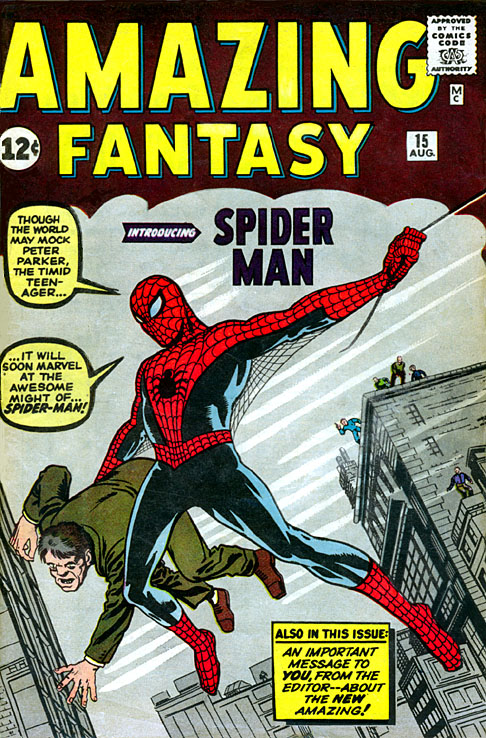
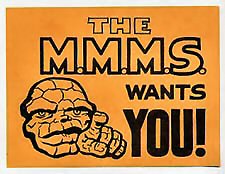

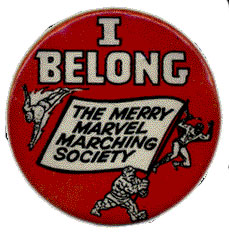
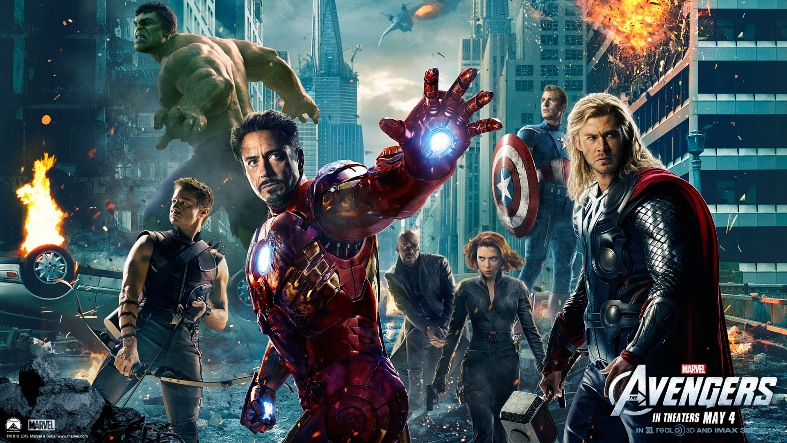
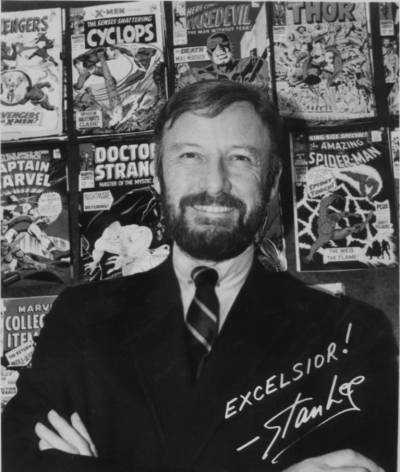
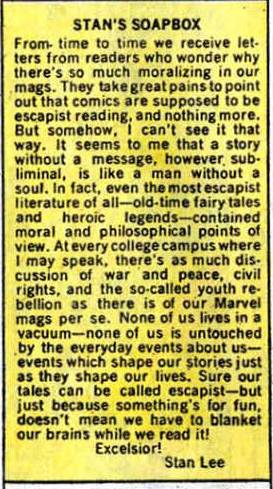

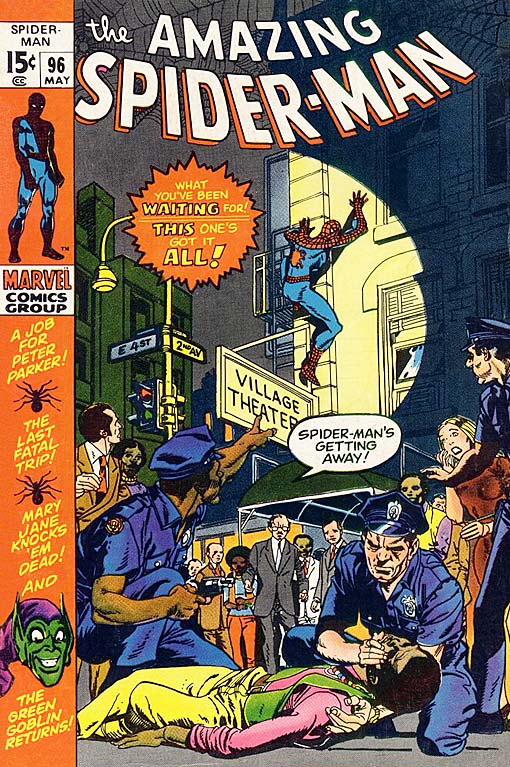
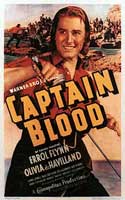 Larry Lieber himself would later become a well-known writer and artist. It was
at this time of his life, while Stanley’s parents were busy with their new
infant son, that Stanley discovered the magical and wonderful world of motion
pictures. His upper Manhattan hangout soon became 181st Street where within
three blocks of each other, five theatres dazzled his mind with big screen epics
that featured the likes of Errol Flynn, Charlie Chan and Roy Rogers. Stanley
later commented that going to the movies was one of the greatest events
imaginable and that he was in heaven as he watched classic stories like Sherlock
Holmes and Moby Dick. At any of those theatres could Stanley ever have imagined
that one day he would create the story lines and characters for some of the
greatest motion pictures of all time?
Larry Lieber himself would later become a well-known writer and artist. It was
at this time of his life, while Stanley’s parents were busy with their new
infant son, that Stanley discovered the magical and wonderful world of motion
pictures. His upper Manhattan hangout soon became 181st Street where within
three blocks of each other, five theatres dazzled his mind with big screen epics
that featured the likes of Errol Flynn, Charlie Chan and Roy Rogers. Stanley
later commented that going to the movies was one of the greatest events
imaginable and that he was in heaven as he watched classic stories like Sherlock
Holmes and Moby Dick. At any of those theatres could Stanley ever have imagined
that one day he would create the story lines and characters for some of the
greatest motion pictures of all time?
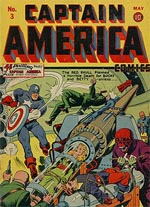 a handful of people in the comics department and his job description could have
been summed up as “general gofer”. The comic book department at that time
consisted of editor Joe Simon and Jack Kirby, the staff artist. As deadlines and
company expansion overloaded Joe Simon and Jack Kirby with more work than they
could handle, Stanley soon got his first break, a chance to write a two-page
text piece entitled “The Traitor’s Revenge”. It was Stanley’s first published
story, appearing in Captain America #3 which was dated May 1941. His first
actual comic book script came shortly thereafter in Captain America #5 dated
August 1941 which was titled “Headline Hunter, Foreign Correspondent.” He was
barely out of high school and was now a full-fledged published author.
a handful of people in the comics department and his job description could have
been summed up as “general gofer”. The comic book department at that time
consisted of editor Joe Simon and Jack Kirby, the staff artist. As deadlines and
company expansion overloaded Joe Simon and Jack Kirby with more work than they
could handle, Stanley soon got his first break, a chance to write a two-page
text piece entitled “The Traitor’s Revenge”. It was Stanley’s first published
story, appearing in Captain America #3 which was dated May 1941. His first
actual comic book script came shortly thereafter in Captain America #5 dated
August 1941 which was titled “Headline Hunter, Foreign Correspondent.” He was
barely out of high school and was now a full-fledged published author.
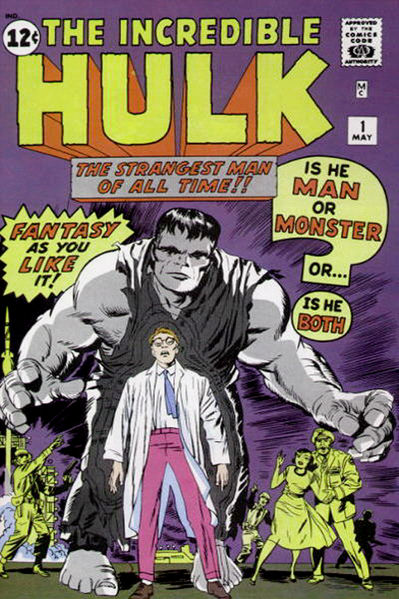
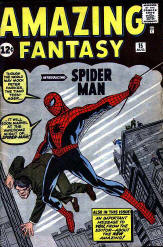 Stan Lee chose Steve Ditko to illustrate his new web slinging character and as
Stan Lee’s words conveyed the drama of his entirely new type of super-hero,
Steve Ditko’s artistry masterfully brought Spider-Man to life. Even then, Stan
Lee could not have predicted the monumental success that Spider-Man would bring
to Marvel Comics. This was the start of Stan Lee’s “Marvel Age of Comics.”
Spider-Man first went to print on a trial basis in the last issue of Amazing
Fantasy in August of 1962. It took until March of 1963 before Marvel officially
published Spider-Man as a regular feature. That year Marvel Comics exploded and
sales of Marvel’s new gallery of superheroes almost doubled. Since that time,
Spider-Man has gone on to become one of the most successful characters in comic
book history and when Spider-Man graced the big screens of the motion picture
industry, Spidey broke all time box office records.
Stan Lee chose Steve Ditko to illustrate his new web slinging character and as
Stan Lee’s words conveyed the drama of his entirely new type of super-hero,
Steve Ditko’s artistry masterfully brought Spider-Man to life. Even then, Stan
Lee could not have predicted the monumental success that Spider-Man would bring
to Marvel Comics. This was the start of Stan Lee’s “Marvel Age of Comics.”
Spider-Man first went to print on a trial basis in the last issue of Amazing
Fantasy in August of 1962. It took until March of 1963 before Marvel officially
published Spider-Man as a regular feature. That year Marvel Comics exploded and
sales of Marvel’s new gallery of superheroes almost doubled. Since that time,
Spider-Man has gone on to become one of the most successful characters in comic
book history and when Spider-Man graced the big screens of the motion picture
industry, Spidey broke all time box office records.
 How do you top the top of the industry? Well, Stan Lee— the production machine
that he is— was on a roll and he once again turned to Jack Kirby to illustrate
an entirely new set of Superheroes which Stan Lee had dreamed up, a group of
mutants that become known as the X-Men. So Stan Lee, together with Jack Kirby’s
magnificent and artistic delineations of each character, published The Uncanny
X-Men issue #1. The X-Men series today is the best-selling group of comic books
in the world.
How do you top the top of the industry? Well, Stan Lee— the production machine
that he is— was on a roll and he once again turned to Jack Kirby to illustrate
an entirely new set of Superheroes which Stan Lee had dreamed up, a group of
mutants that become known as the X-Men. So Stan Lee, together with Jack Kirby’s
magnificent and artistic delineations of each character, published The Uncanny
X-Men issue #1. The X-Men series today is the best-selling group of comic books
in the world.

 Artists, writers, owners and management came and went throughout the years at
Marvel but there was one force that remained constant and that was the creative
force of Stan Lee. Even Jack Kirby left and went on to illustrate for DC Comics.
Stan Lee later reunited with Jack Kirby on a project that Stan Lee had wanted to
do for years, a novel-length version of Silver Surfer, one of Stan Lee’s
favorite characters. Stan Lee also branched out by creating and writing a
syndicated Spider-Man newspaper comicstrip that started in 1977, appearing in
newspapers around the world. As with everything Stan Lee does, the strip soon
became the most popular, most successful and now the longest running strip
featuring a superhero. Stan Lee still writes it today while his artist brother,
Larry Lieber, does the penciling for the dailies.
Artists, writers, owners and management came and went throughout the years at
Marvel but there was one force that remained constant and that was the creative
force of Stan Lee. Even Jack Kirby left and went on to illustrate for DC Comics.
Stan Lee later reunited with Jack Kirby on a project that Stan Lee had wanted to
do for years, a novel-length version of Silver Surfer, one of Stan Lee’s
favorite characters. Stan Lee also branched out by creating and writing a
syndicated Spider-Man newspaper comicstrip that started in 1977, appearing in
newspapers around the world. As with everything Stan Lee does, the strip soon
became the most popular, most successful and now the longest running strip
featuring a superhero. Stan Lee still writes it today while his artist brother,
Larry Lieber, does the penciling for the dailies.




